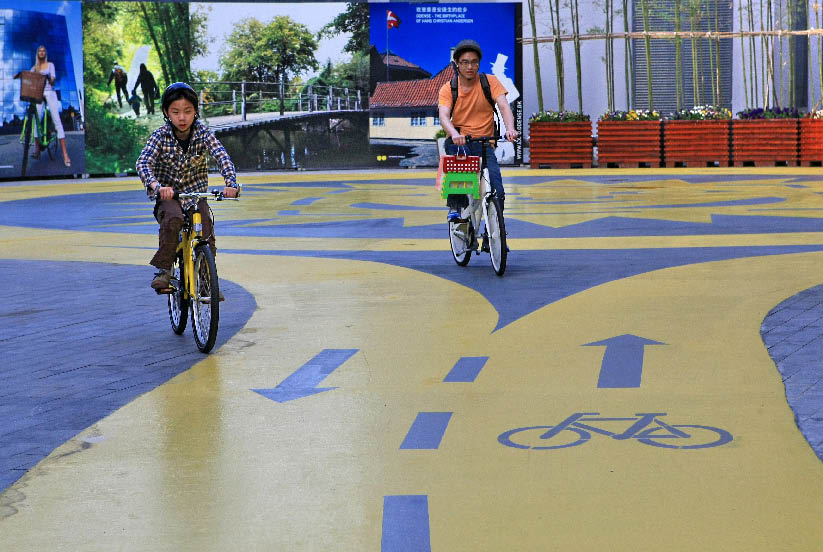|
The Expo Park is a testing ground for low-carbon innovations. Unlike previous expos featuring newly built constructions, the Shanghai Expo values the industrial heritage buildings that have stood here for decades: the idea of preserving the existing structures and remodeling them into beautiful exhibition space met surprising approbation. Old factories and buildings in the area that would become Expo Park were renovated to create 300,000 square meters of pavilion space.
Electricity consumption per visitor for each expo has been climbing greatly. The Shanghai Expo is expected to get a record-breaking 70 million visitors, so it's not difficult to imagine the amount of electricity required.
In order to reduce the energy consumption, the organizers have tried out various green solutions. Since the event is held during the summer, when Shanghai comes under the influence of the southeast monsoon, the Expo Park is designed in accordance with the prevailing wind at this time, channeling the wind into each building, thereby greatly reducing air-conditioner use.
In addition, solar battery systems have been installed on the roof and glass curtain walls of many pavilions, including the five permanent constructions – the Central Axis, China Pavilion, Theme Pavilion, Expo Center and Performance Center – and some national pavilions. The China Pavilion and the Theme Pavilion also incorporate BIPV technology, which integrates photovoltaic systems into the building materials themselves to supply electricity needs. Using this system the Theme Pavilion alone can generate 2.8 million kWh a year – enough to meet the annual electricity demand of over 4,000 Shanghai households.
Low Carbon, High Visibilty
 |
| The “Cycle City” of Odense, Denmark, is a live case in the Expo Park. |
The Chinese government has set itself a target that by 2020 it will reduce carbon dioxide emissions per unit of GDP by 40 to 45 percent compared with the 2005 level. To help towards this ambition, Shanghai Expo is using multifarious green technologies.
"We built the Expo Park for a sustainable and harmonious city future, not just a six-month party," states Wu Zhiqiang, chief planner of the Expo Park. "The site formerly seated 280 factories and 10,000-plus slum dwellings. Construction of the Expo Park allowed us to clear out a source of pollution in the heart of the city and what's more, to resettle these people in much better accommodation."
The external cladding of the Vanke Pavilion is made of straw, a common agricultural waste around the world, which is normally burnt. You might think there was no way a "straw" building could be solid enough, but Vanke's bold innovation is changing opinions. Vanke's construction material, composed of 95 percent wheat straw and 5 percent environmentally safe adhesive, undergoes a series of processes involving air-drying, surface smoothing and high-pressure compression, and has proved robust and stable. As one of China's leading real estate developers, Vanke aims to build eco-houses and promote low-carbon communities around the country. Currently the company is working on turning agricultural waste – from beet and corn for example – into construction materials.
The Shanghai Eco-Home is completely made from "waste. Its brickwork walls are made with reclaimed bricks from demolished buildings; the tabletops inside are made of scrapped circuit boards; and it is designed to make the maximum use of solar energy and captured rainwater, saving 75 percent more energy than conventional buildings.
Other cutting-edge green technologies include: the Japanese Pavilion's floor that can generate electricity when walked on; the Swiss Pavilion's energy-generating and bio-degradable curtain made from soy fiber; the Portuguese Pavilion's recyclable cork walls; the Madrid Pavilion's "Air Tree" that can produce electricity from wind and regulate ambient temperature; the London Pavilion's grain roof that catches rainwater to cool its interior. …
| 